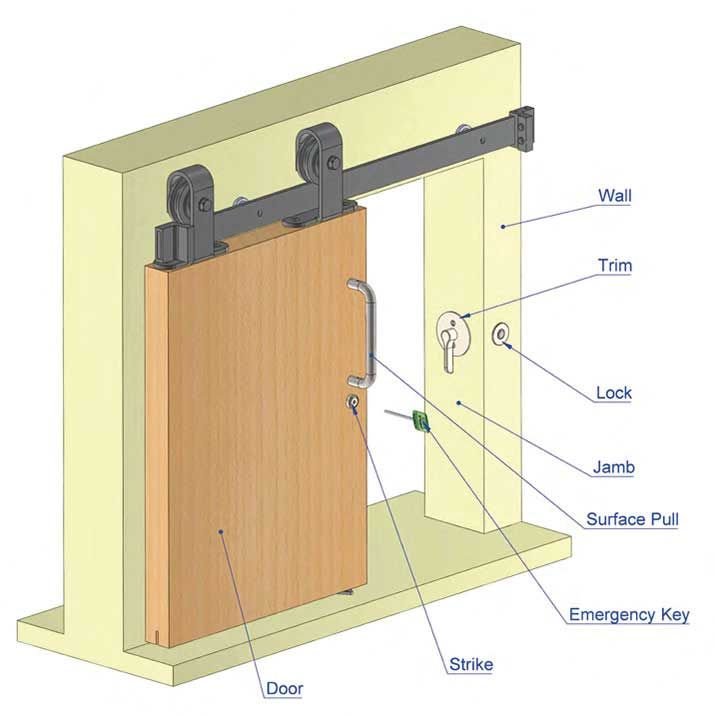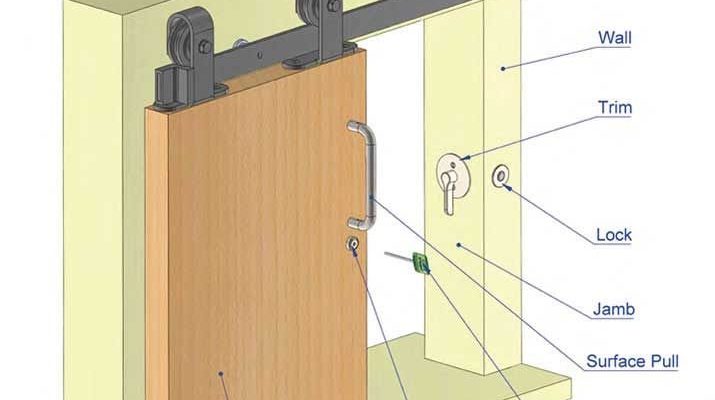
Picture this: You’re in your living room, and someone wanders in needing to chat, while you’re in your home office, on an important call. A privacy lock can be a perfect solution. It offers that peace of mind, letting you focus without interruptions. Plus, with options like the Kwikset or Schlage privacy locks, you’re not just getting security but also a stylish addition to your door. Let’s dive into how you can easily install one on your sliding barn door.
Gather Your Tools and Materials
Before jumping into the installation, let’s make sure you have everything ready. This makes the process smoother and saves you from unexpected trips to the hardware store. Here’s what you’ll need:
- Privacy lock set (like Kwikset or Schlage)
- Screwdriver (Phillips or flathead, depending on your lock)
- Tape measure
- Pencil
- Drill with appropriate drill bits
- Level to ensure everything is aligned
Having these tools on hand is like having the right ingredients for a recipe. Missing one? You might end up with a dish that doesn’t quite hit the mark. Also, check the instructions that come with your privacy lock for any specific tools or materials you might need.
Choose the Right Location for Installation
Now that you have your tools, it’s time to select the best spot for your privacy lock. The key here is positioning. You want it at a height that’s comfortable and makes sense for how you’ll use the door.
A good rule of thumb is to place the lock about 36 inches from the floor. This is typically around the height of a doorknob. But if you’re feeling creative or have little ones around, adjust accordingly. Just make sure that wherever you place it, it’s easy to reach.
Once you’ve found the right spot, mark it with your pencil. This little step is crucial—like laying out the puzzle pieces before you start assembling. A single misaligned mark could lead to a crooked installation.
Measure and Mark the Drill Holes
After finding that sweet spot, it’s time to measure and mark for the drill holes. Take your privacy lock set and look at the installation instructions. You’ll typically see a template to guide your markings. This template shows exactly where to drill for both the cylinder and the strike plate.
If your lock doesn’t come with a template, measure the width of the lock and mark it on the door. Don’t forget to mark the heights for both the top and bottom holes. Use your tape measure and level to ensure accuracy. A slight miscalculation can mean extra work later on, so double-check those measurements!
Drill the Holes
With your marks in place, it’s time to drill! Grab your drill and a bit that matches the size of the holes you need for the lock. Start slow—this isn’t a race. Drilling too fast can lead to mistakes or even damage the door.
Here’s a pro tip: Use a piece of masking tape on the drill bit to mark how deep you need to go. This will help you avoid drilling too deep. Think of this step as carving a pumpkin; too much pressure, and you might break the surface. Aim for clean, steady drilling, and take your time.
Install the Privacy Lock
Now comes the exciting part—installing the privacy lock! Place the lock cylinder into the hole you drilled, ensuring that the thumb turn (the part you turn to lock) is facing the inside of the room. Secure it in place with the screws provided in your lock set.
After securing the cylinder, it’s time to attach the strike plate on the door frame. Position it so the lock lines up perfectly when the door is closed. I recommend using a level here to really ensure alignment. Once it’s in place, screw it down tightly.
Test the Lock
After everything is installed, it’s time for the moment of truth: testing the lock. Close your door and give it a try. Does it slide smoothly? Does the lock turn easily? You want it to feel natural—like it’s always been there. If it doesn’t, you might need to adjust the strike plate or ensure everything is tight.
Here’s the thing: if you feel resistance when locking or unlocking, inspect your installation. Sometimes, a small adjustment can make a big difference. Like tuning a guitar, everything needs to be in harmony.
Finishing Touches and Troubleshooting
After testing the lock, take a moment to admire your work! But, let’s address the potential issues you might face. If the lock seems stiff or doesn’t catch properly, check the alignment of the strike plate. It might need a gentle nudge to fit just right.
Another common hiccup is if the door doesn’t latch properly. This could be due to the door settling over time or not being level. If you find this to be the case, consider adjusting the hinges or the placement of the lock to compensate.
If you need to readjust, don’t worry. It’s all part of the process! Nothing beats the satisfaction of a job well done, especially when you’ve tackled it yourself.
Enjoy Your New Privacy!
Now that you’ve installed a privacy lock on your sliding barn door, enjoy the newfound comfort and security it provides. Ideally, this little upgrade not only adds a layer of privacy but also enhances the overall look of your home.
Every time you slide the door and engage the lock, you’ll feel a sense of accomplishment. Honestly, it’s like adding the cherry on top of an already delicious sundae. You’ve transformed your space into something even more inviting and personal.
And remember, making home improvements doesn’t have to be daunting. With the right tools and a bit of patience, you can tackle more projects with confidence. Happy DIY-ing!
